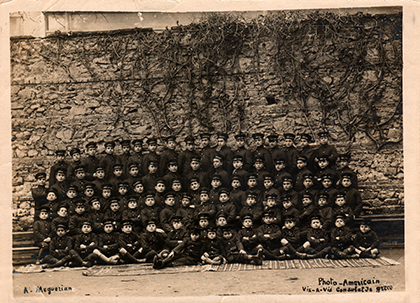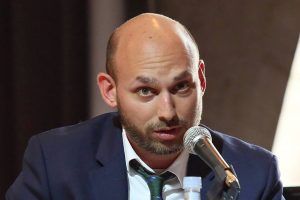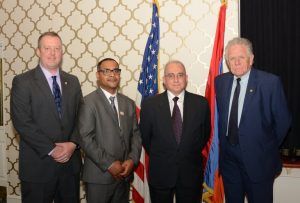Armenian Genocide Museum-Institute has received a collection of nearly 450 original photos

The Armenian Genocide Museum-Institute has obtained a rich, exclusive collection of photos showing the Armenian Genocide and its consequences.
The collection of nearly 450 original photos was granted to the Armenian Genocide Museum-Institute as a donation from the inheritors of the Greek-Armenian Khanigian family, for which it is important to preserve the remembrance of the Armenian Genocide and transmit it to the generations.
The collection of photos includes photos showing the orphanages in the Ottoman Empire, Greece, Egypt and Syria, the life of the orphans, the activities of the Near East Relief, as well as photos showing scenes of the Armenian Genocide. Several important facts are stated on the opposite side of most of the photos.
“Obtaining this collection ahead of the Centennial of the Armenian Genocide is not only symbolic, but also exclusive for the Armenian Genocide Museum-Institute, and these photos will have their special place in the new exhibition to be opened at the museum in April 2015. Among the important photos is, of course, the original of the photo of the arrest of head of the Young Turks Ismail Hakki Bey on the part of British soldiers,” says Director of the Armenian Genocide Museum-Institute Hayk Demoyan.
The Armenian Genocide Museum-Institute expresses its gratitude to RA Ambassador Extraordinary and Plenipotentiary to Greece Gagik Ghalachyan for this unique collection.
In early September 1915, then U.S. Ambassador to the Ottoman Empire Henry Morgenthau addressed the U.S. Department of State, deeming it necessary to create a special committee that would organize a fundraiser and procure means to help the Armenians who had survived the massacres.
Starting from October 1, 1915, the Armenian Relief Committee organized the fundraiser for the needy. Until then, two similar committees in the Near East joined the Armenian Relief Committee and formed the American Committee for Armenian and Syrian Relief, which was renamed the Near East Relief by the decision of the U.S. Congress on August 6, 1919.
Established as an ad hoc committee, the Near East Relief went on to become a large organization with the initial purpose of raising 100,000 dollars, but the organization made a more than 110 million dollar investment to save migrants and orphans throughout the fifteen years of its existence. The humanitarian assistance was provided by American figures and missioners in the Caucasus, the Near East and the Balkans.




 Արևելահայերեն
Արևելահայերեն Արևմտահայերեն
Արևմտահայերեն Русский
Русский






